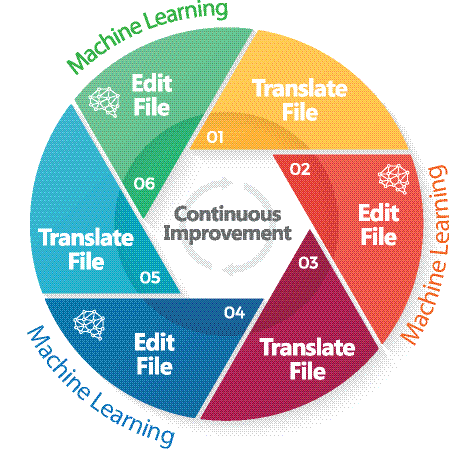How does Pairaphrase produce translations?
This article explains the process by which Pairaphrase produces translations on behalf of its users.
Pairaphrase using a combination of proprietary technology and partnerships with leading machine translation developers to generate translations.
Translation Technology Partners
Pairaphrase provides access to multiple machine translation (MT) engines, including AWS, DeepL, Google, Microsoft, and OpenAI. Users can select the engine that best suits their translation needs. These engines automatically translate text from one language to another, often providing a first draft translation. AWS and DeepL, in particular, offers customized translations by integrating terms from glossaries and translation memories. As of August 12, 2024 Pairaphrase has translation partnerships with AWS, DeepL, Google, Microsoft, and OpenAI.
Translation Memory
User edits are stored in domain specific translation memories for future reuse. Users can pull and reuse previous translations stored in a translation memory. Users can use translation memories to train translation engines and produce custom translations. When a user submits a translation request, Pairaphrase will search the translation memory before requesting a new translation from a translation engine. Reusing previous translations improves translation quality. Translation memory works on the segment level and not the word level.
Glossary (Term base)
Glossaries can serve as either a reference tool for users, providing pre-approved translations for specialized vocabulary, or they can be used by the translation engine to enforce specific translations automatically, by inserting terms directly into the translation. Glossaries are particularly effective in creating custom translations that require less human editing. This helps in maintaining consistency, especially with specialized vocabulary or industry-specific jargon.
Large Language Models (LLMs)
LLMs can be used directly to translate text from one language to another. The model can be fine-tuned on specific translation tasks or trained on large multilingual datasets to improve accuracy. LLMs can be fine-tuned with domain-specific data (like medical, legal, or technical content) to produce more accurate translations in specialized fields. This ensures that the translations use the correct terminology and adhere to the nuances of the specific industry and organization.
By integrating these technologies, Pairaphrase aims to provide accurate and consistent translations while reducing the time and effort required for translation projects.
Need help? Contact us via online chat for the fastest customer support.

